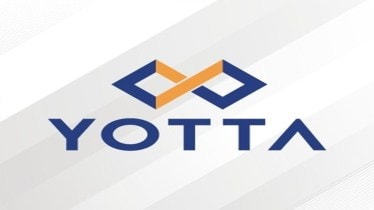To match the lowest bid, Hiranandani-owned Yotta Data, plans to discount its original quoted price by approximately 15% for supplying some models of graphics processing units (GPUs) under the Rs 10,000 crore IndiaAI mission, the company’s co-founder, managing director, and CEO Sunil Gupta told FE. Yotta is offering high-performance Nvidia H100 GPUs and L40S GPUs. While the quantum of discount has been firmed up for H100 model, the same would be worked out for others too.
Gupta highlighted that, out of Yotta’s proposed GPU capacity, 6,000 units are already available —far exceeding the minimum 1,000 GPUs proposed by other bidders. This puts Yotta in a strong position to meet demand promptly.
The development is significant as Yotta has proposed to supply 9,216 GPUs out of the total 18,693 GPU units under the mission. This makes Yotta the largest GPU supplier among the bidders. However, unlike competitors such as E2E, Jio Platforms and NxtGen, which emerged as the lowest bidders across different GPU models, Yotta initially did not provide the lowest pricing.
Gupta emphasised that the prices offered under the IndiaAI mission are extremely competitive. He pointed out that, in their eagerness to capture the market, companies have strategically reduced costs— a move that aligns with Yotta’s pricing approach. “Globally, GPU dynamics have changed significantly, leading to greater availability and subsequently lower prices,” he added.
According to Gupta, pricing is ultimately about balancing expected returns over time. “The payback period may extend, but the opportunity lies in a long-term strategy rather than short-term margins,” he explained.
The government is finalising empanelment agreements with companies that will provide computational power to startups, academia and researchers. Under the IndiaAI mission, the government is also offering a 40% subsidy to further support AI development in the country.
The average cost of computing under the IndiaAI mission is Rs 115.85 per hour, while the rate for higher precision AI computing is Rs 150 per hour.
Gupta explained that revenue generation will not be driven by individual transactions with high margins. Instead, the focus is on making GPUs and associated services accessible to a broader audience. “In the long run, making smaller margins on a larger scale is more sustainable. Otherwise, excess GPU capacity will remain underutilised,” he said.
He noted that mass AI adoption would drive industry-wide scalability, making it essential to think beyond traditional pricing models.
Yotta has placed an order for 16,000 GPUs, positioning it among the top ten largest GPU clusters globally—excluding those procured by major tech companies. The company is also expanding into the B2C generative AI segment by integrating open-source models like DeepSeek into its infrastructure.
Additionally, Yotta plans to leverage other open-source models, such as Llama, to create a B2C generative AI marketplace. The goal is to offer free basic AI services while charging users only for advanced features, a pricing model significantly lower than ChatGPT’s $20 per month subscription.
Last week, Yotta launched myShakti, a B2C generative AI chatbot powered by DeepSeek’s open-source AI model. This move marks the company’s foray into direct consumer AI applications.
When asked about return on investment, Gupta said that GPUs alone will not generate significant returns. “The real revenue will come from platform services, SaaS offerings, and AI model hosting,” he stated.
Currently, 75% of Yotta’s GPU capacity is utilised by global clients, while 25% serves the domestic market. However, Gupta noted a shift, with India’s demand increasing, now reaching a 50-50 split. Research institutions, academia, and startups are actively using GPUs for training and fine-tuning AI models, contributing to this growth.
Moreover, the government’s initiative to develop India-origin large language models (LLMs) is expected to further boost Yotta’s positioning. The company’s extensive GPU capacity and its partnership with Microsoft for cloud applications provide a competitive edge.
Gupta believes that startups and enterprises will increasingly prefer turnkey AI solutions over raw GPU access. “Many businesses want ready-to-use AI models and applications rather than just computing power. That’s where platform services play a crucial role,” he said.
Yotta plans to offer 30% of its GPU capacity through a service-based model, which enhances value for users while yielding higher returns for the company.
Addressing concerns over AI models reducing GPU demand, Gupta said that AI democratisation will ultimately drive broader adoption. “In India, for any technology to see widespread adoption, there comes a stage where it must become accessible at scale,” he said.
Although lower price points will reduce revenue per unit, the sheer volume of AI adoption will offset this decline.
